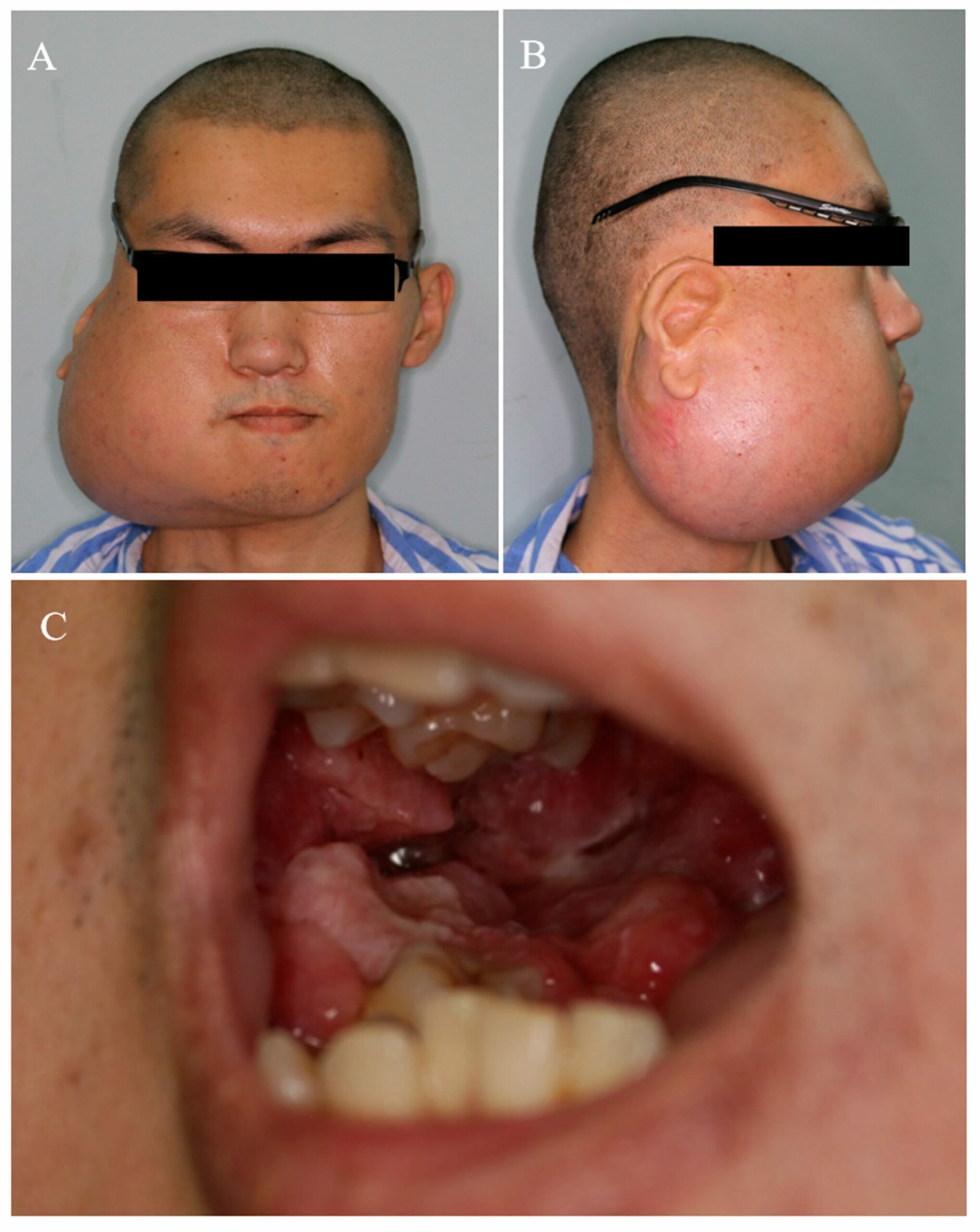Mandibular Ameloblastoma: Symptoms, Causes, Treatment
What are the symptoms of mandibular ameloblastoma?
Mandibular ameloblastoma is a rare, benign (non-cancerous) tumor that typically occurs in the jawbone (mandible) and is derived from the cells that form the enamel of the teeth. The symptoms of mandibular ameloblastoma can vary depending on the size and location of the tumor, but they may include:
- Swelling: Swelling in the jaw or cheek area is a common symptom of mandibular ameloblastoma. The swelling may be painless and slow-growing.
- Pain or tenderness: Some people with mandibular ameloblastoma may experience pain or tenderness in the affected area, especially if the tumor is large or pressing on nearby structures.
- Loose teeth: The tumor may cause the teeth in the affected area to become loose or misaligned.
- Difficulty chewing or swallowing: A large tumor in the jawbone can interfere with the ability to chew food or swallow properly.
- Facial asymmetry: As the tumor grows, it may cause the jawbone to expand, leading to facial asymmetry or a noticeable lump on the jawline.
- Tooth displacement: The tumor may displace nearby teeth, causing them to shift position or become crowded.
- Paresthesia: In some cases, mandibular ameloblastoma may cause numbness or tingling in the lips, chin, or lower jaw due to compression of nerves in the area.
It’s important to note that mandibular ameloblastoma is a slow-growing tumor, and many people may not experience symptoms in the early stages. However, as the tumor grows, it can cause more noticeable symptoms. If you experience any of these symptoms, especially if they are persistent or worsening, it’s important to see a healthcare provider for an evaluation.
What are the causes of mandibular ameloblastoma?
The exact cause of mandibular ameloblastoma is not well understood. However, it is believed to arise from the cells that form the enamel of the teeth, known as ameloblasts. The tumor typically develops in the jawbone (mandible) and is thought to be caused by changes (mutations) in the DNA of these cells.
While the exact reasons for these mutations are not clear, several factors may contribute to the development of mandibular ameloblastoma, including:
- Genetic factors: Some studies suggest that certain genetic mutations may increase the risk of developing mandibular ameloblastoma. However, the role of genetics in the development of this tumor is not well understood.
- Environmental factors: Exposure to certain environmental factors, such as radiation or certain chemicals, may play a role in the development of mandibular ameloblastoma. However, more research is needed to understand the specific environmental factors that may contribute to this tumor.
- Developmental factors: Mandibular ameloblastoma is more common in adults than in children, suggesting that factors related to aging or development may play a role in its development.
- Other factors: Some studies have suggested a possible association between mandibular ameloblastoma and other factors such as trauma or infection, but more research is needed to confirm these associations.
Overall, the exact cause of mandibular ameloblastoma is not well understood, and more research is needed to identify the underlying factors that contribute to its development.
What is the treatment for mandibular ameloblastoma?
The treatment for mandibular ameloblastoma typically involves surgery to remove the tumor and a margin of surrounding healthy tissue. The goal of surgery is to completely remove the tumor while preserving as much of the jawbone and surrounding structures as possible. The specific surgical approach will depend on the size and location of the tumor, as well as the extent of its spread. Treatment options may include:
- Curettage: In some cases, a procedure called curettage may be used to scrape out the tumor from the jawbone. This procedure is less invasive than other surgical options but may be less effective at completely removing the tumor.
- Resection: For larger tumors or tumors that have spread to surrounding tissues, a more extensive surgical resection may be necessary. This may involve removing a portion of the jawbone (partial mandibulectomy) or the entire jawbone (total mandibulectomy), along with surrounding soft tissues.
- Reconstruction: After surgery, reconstruction of the jawbone may be necessary to restore function and appearance. This may involve using bone grafts or implants to rebuild the jawbone.
- Radiation therapy: In some cases, radiation therapy may be used after surgery to kill any remaining cancer cells and reduce the risk of recurrence. Radiation therapy may also be used as a primary treatment for tumors that cannot be surgically removed.
- Chemotherapy: Chemotherapy is not typically used as a primary treatment for mandibular ameloblastoma, but it may be used in combination with surgery and radiation therapy for advanced or recurrent tumors.
The specific treatment plan for mandibular ameloblastoma will depend on several factors, including the size and location of the tumor, the extent of its spread, and the overall health and preferences of the patient. It’s important for patients to work closely with a healthcare team that specializes in the treatment of head and neck tumors to develop a personalized treatment plan. Early detection and treatment of mandibular ameloblastoma can improve outcomes and quality of life.




